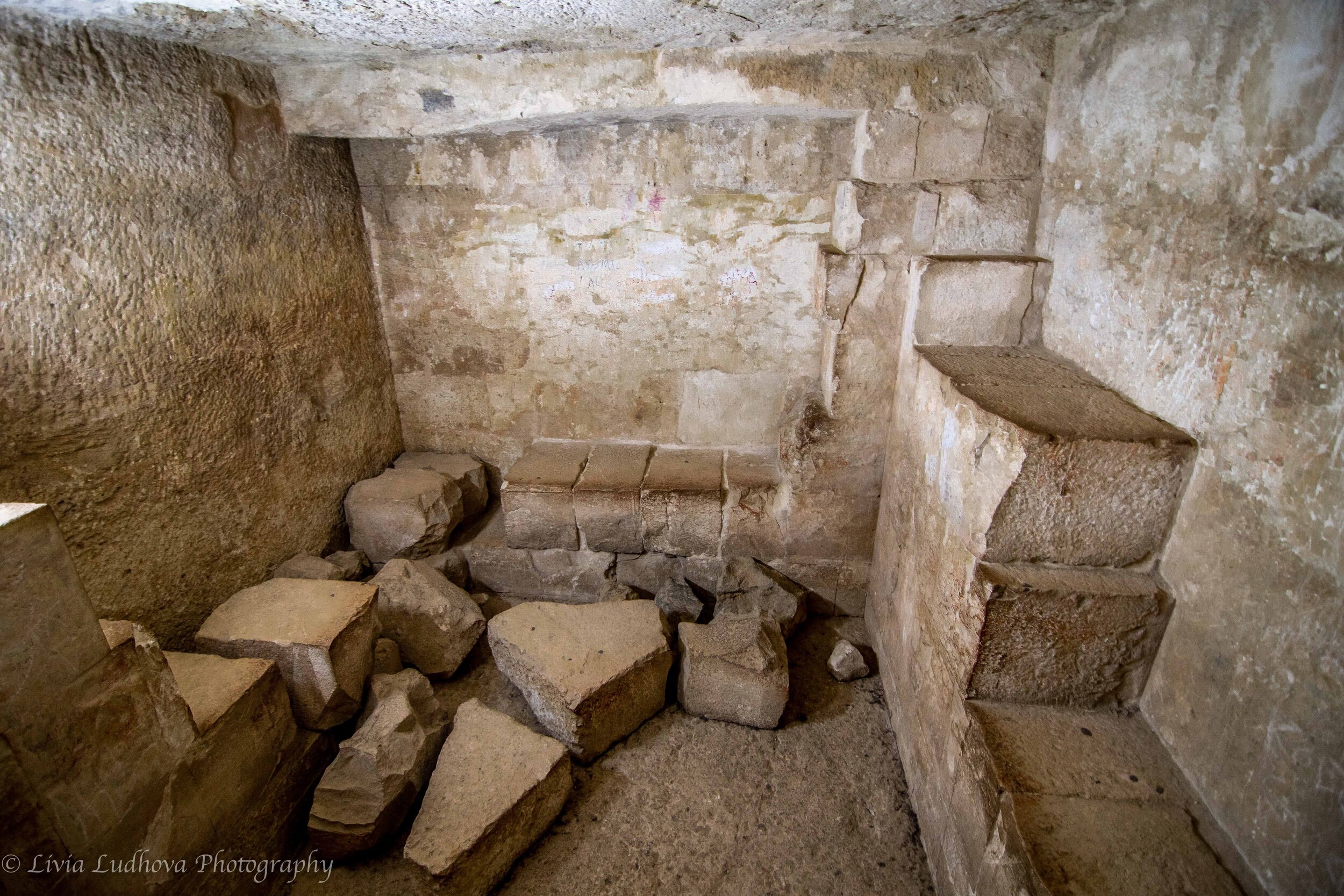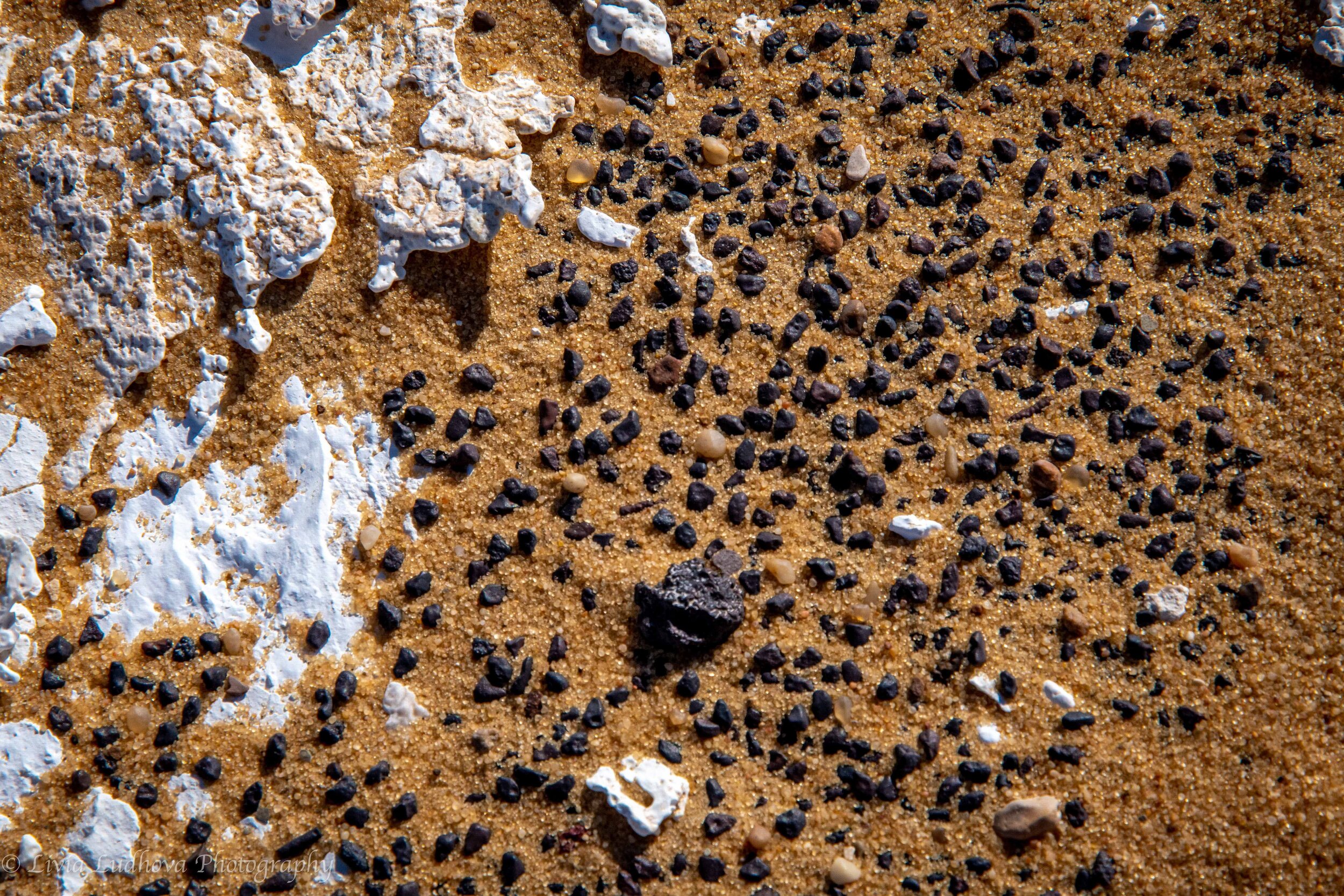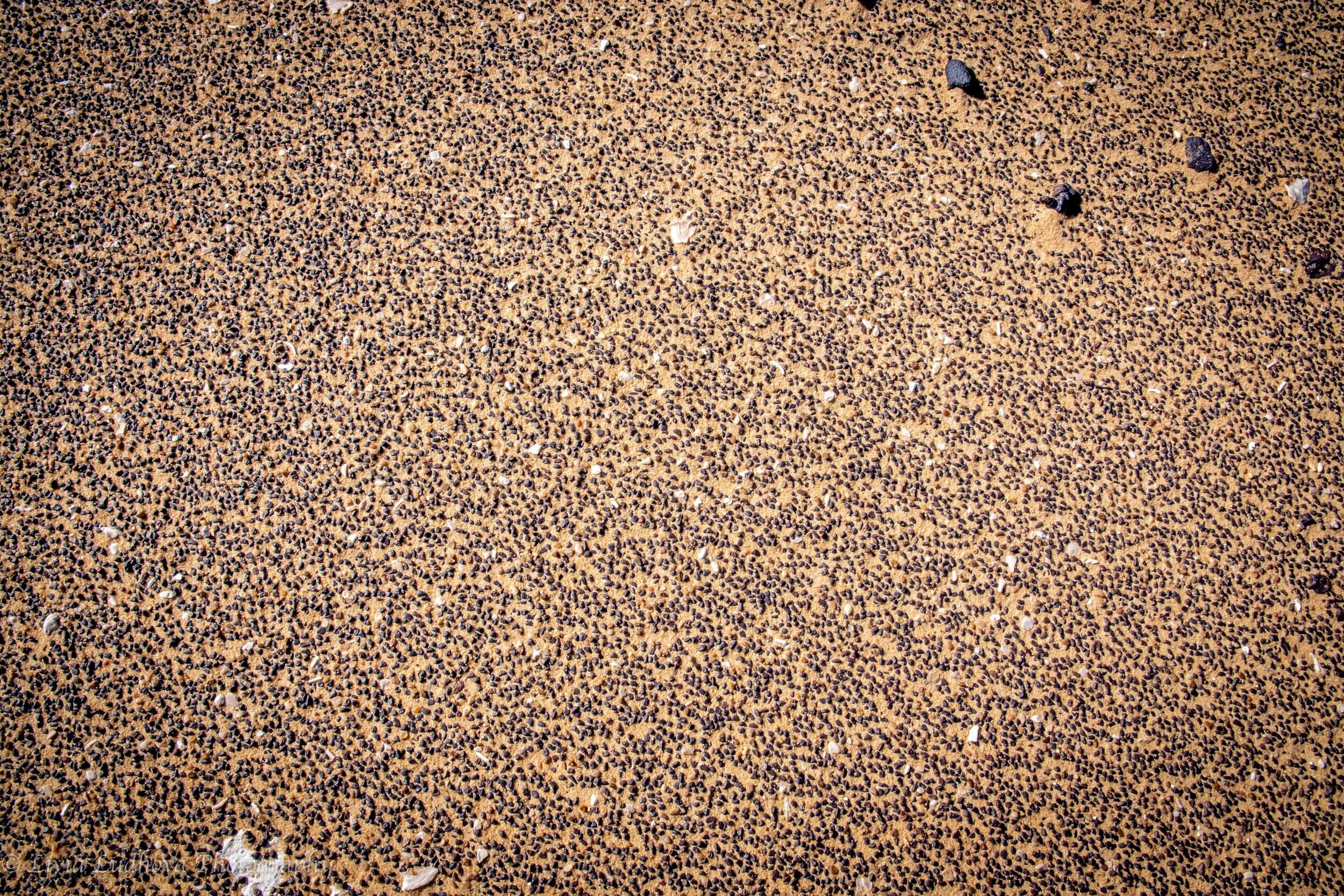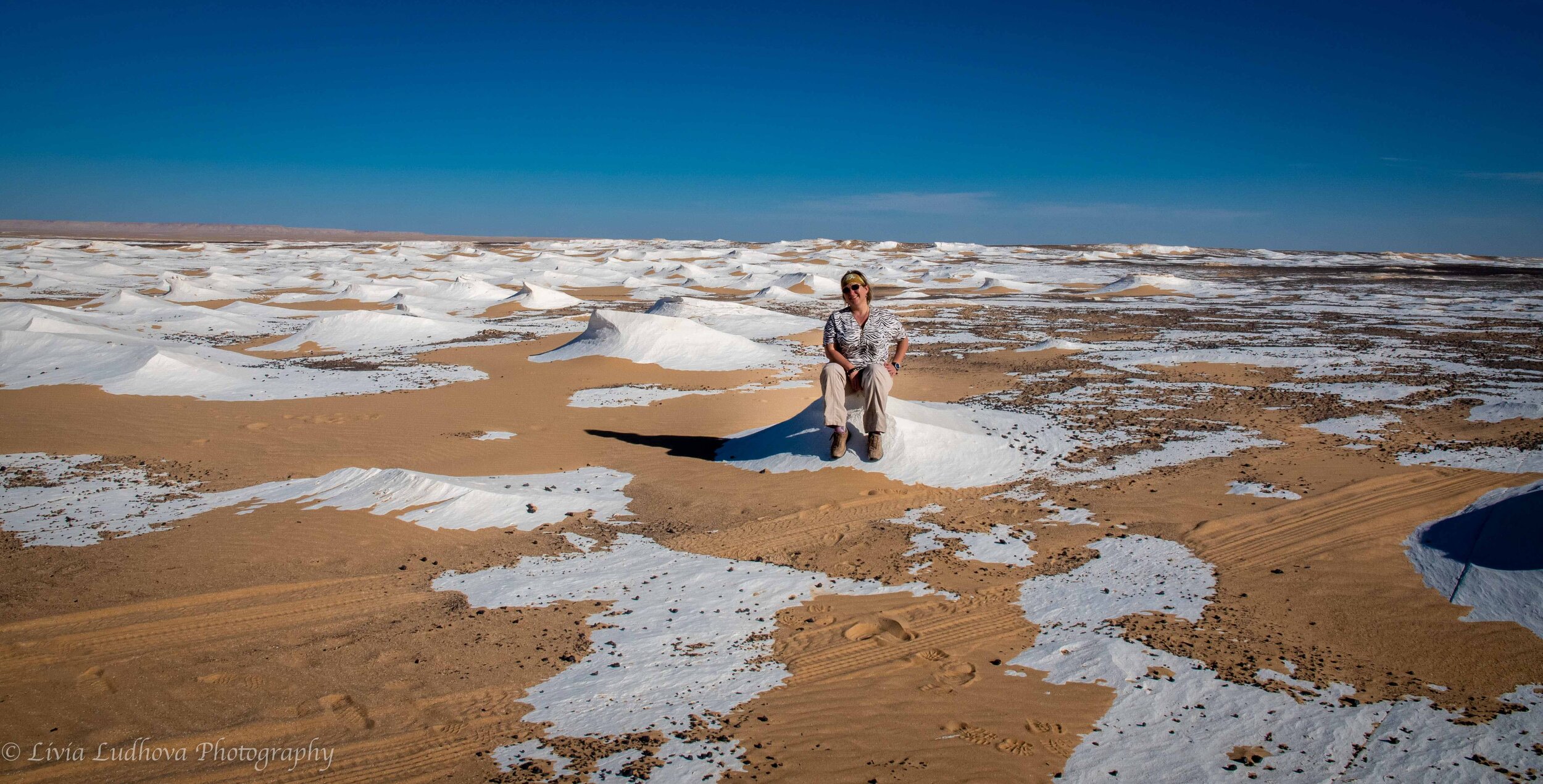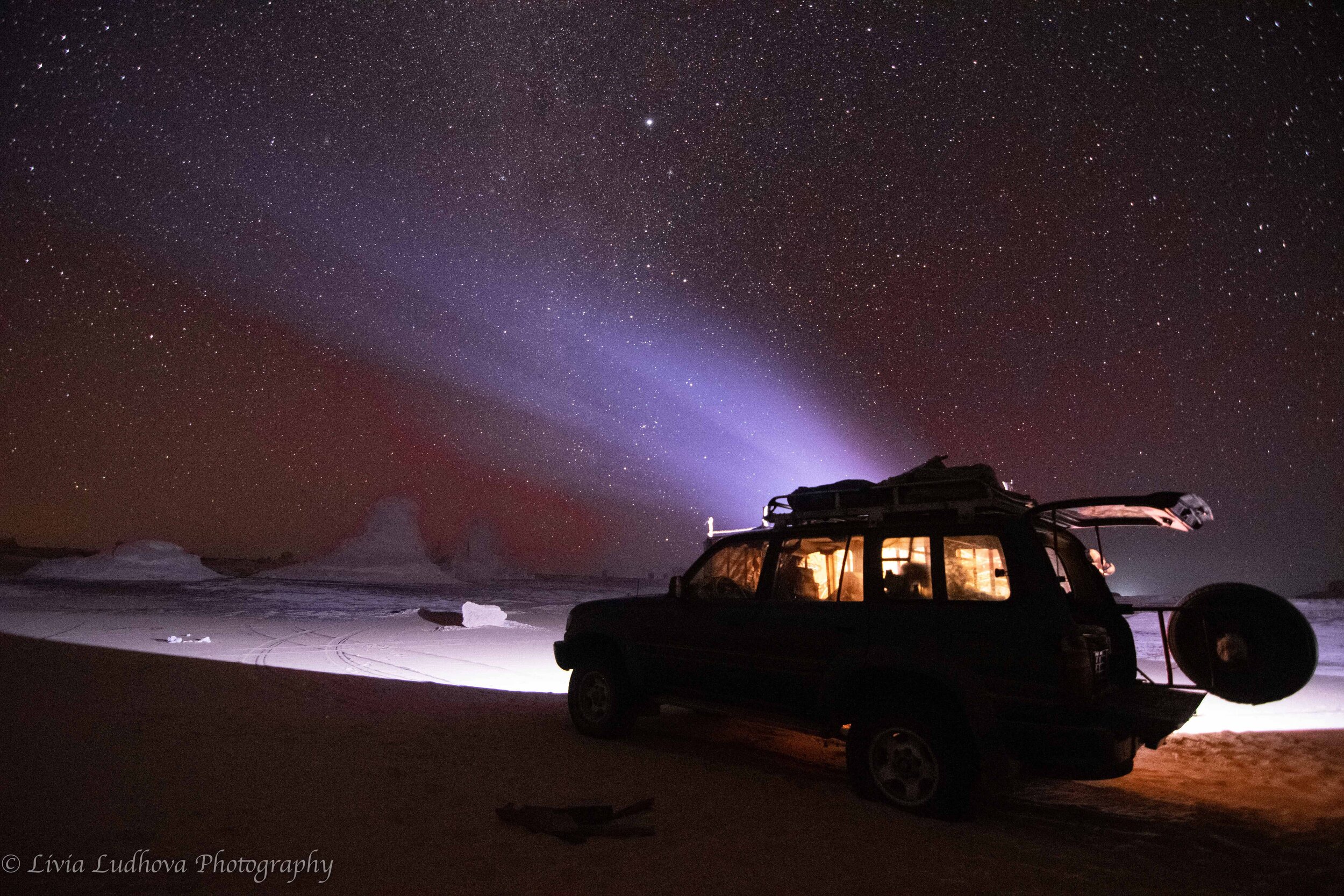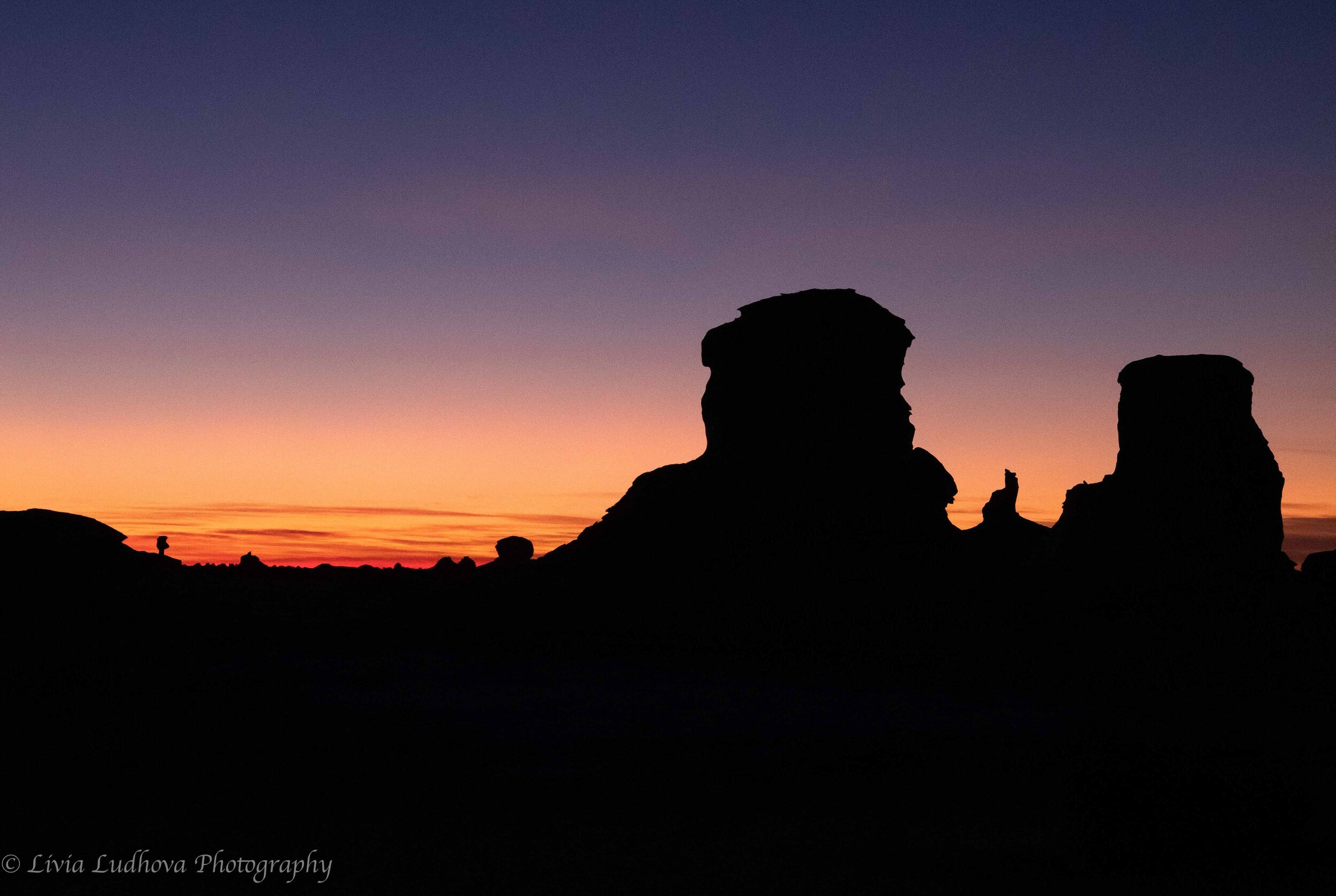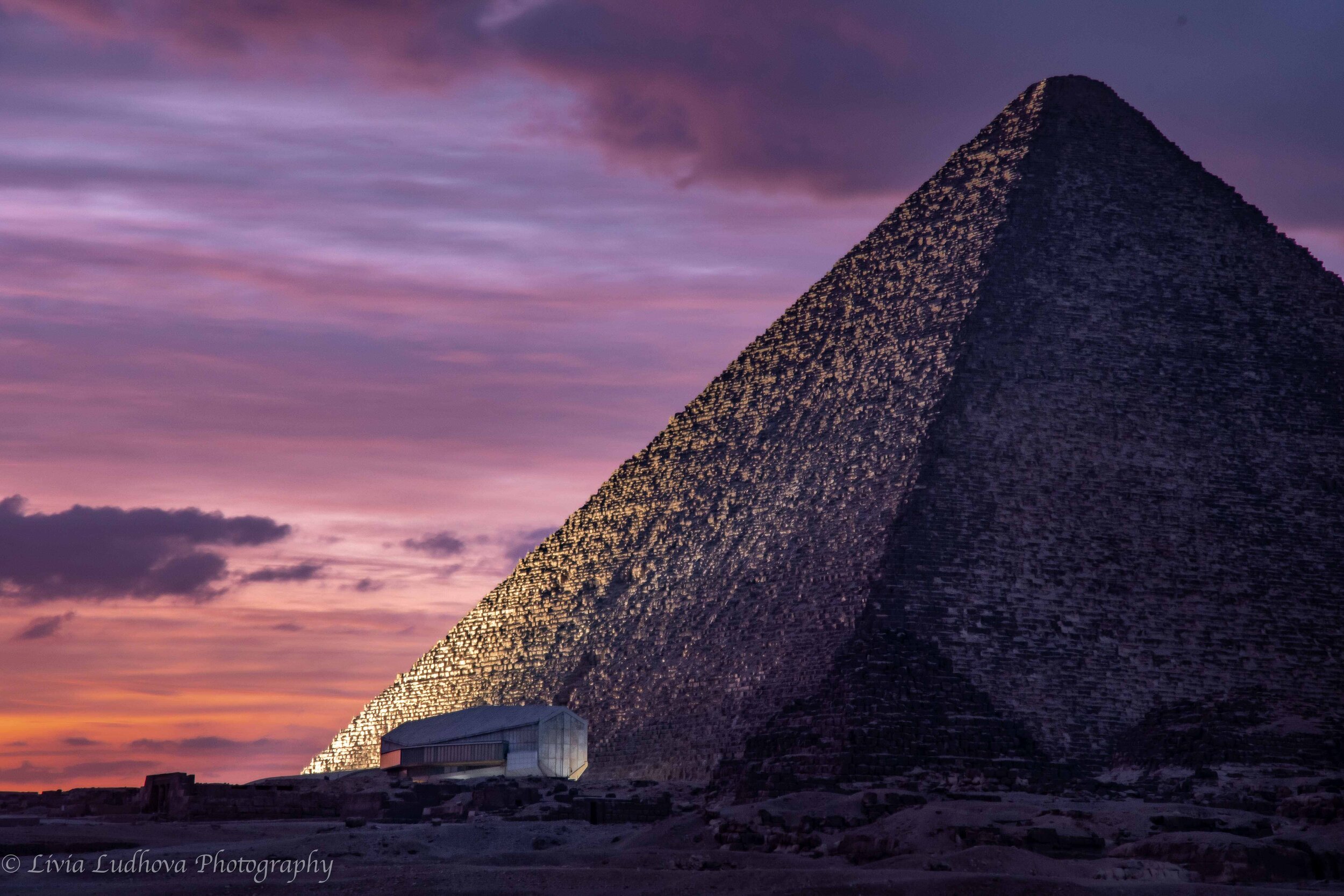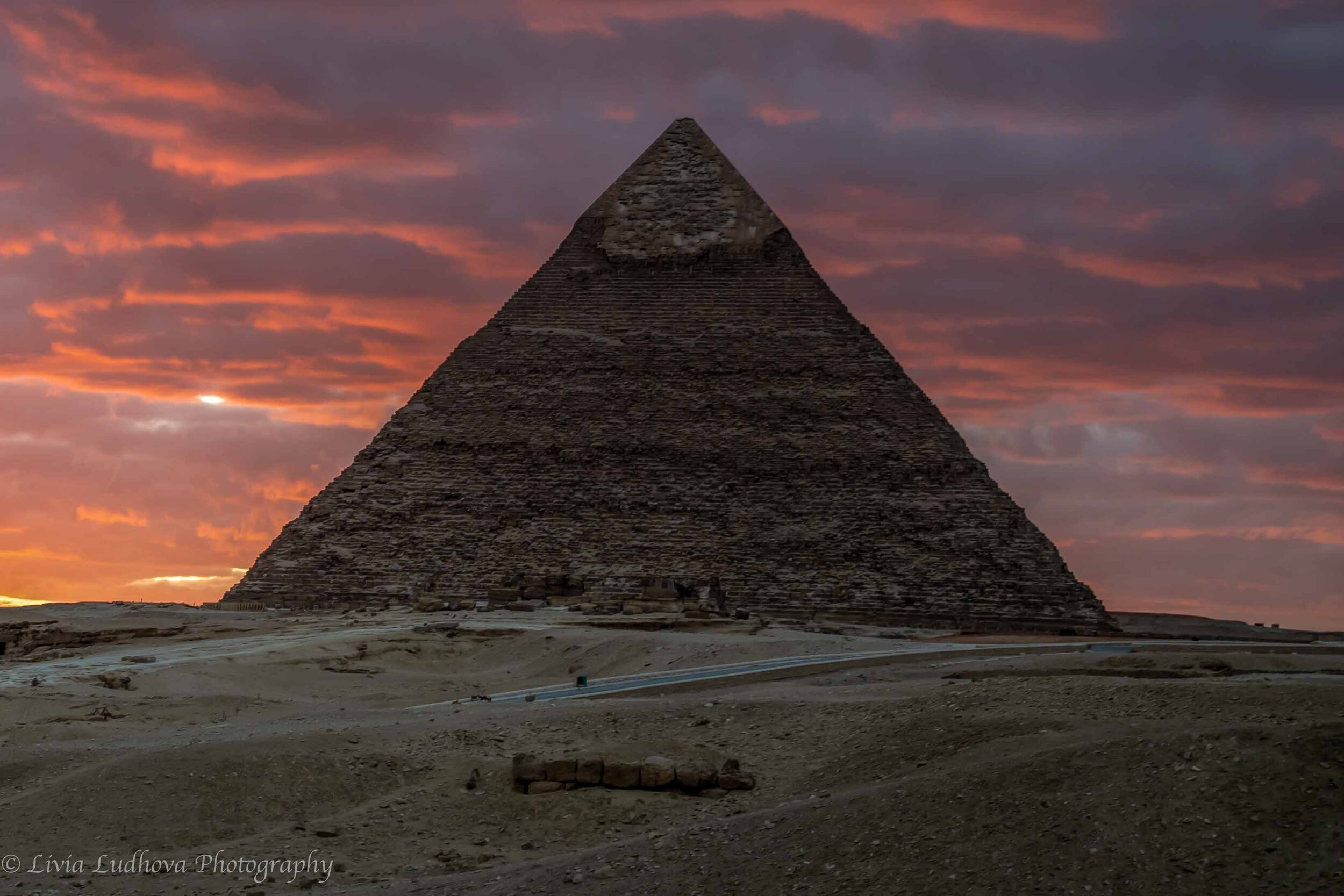
My first travel to Egypt (26/12/2019 - 05/01/2020)
I dreamt about going to Egypt since my childhood, when I read about all the treasures in the books of the Slovak historian and a writer for youth Vojtech Zamarovsky. And more I learned about Egypt over the years, more I wanted to see. I remember seeing the first photo of the White Desert quite some time ago - I could not believe it can be real. And so I was postponing the big trip, almost afraid to make it happen in order not to destroy the magic of imagining it. And then I said enough - time to go. I have just about 10 days for the trip - but who said I cannot go there more times. So I just flew in and started one of the most extra-ordinary travels I did - and I did many. These days I slept only few hours per night, but the flame of the adventure and magnificent past was keeping me awake. Each day was completely different but equally emotional for me. Each day dedicated to my dreams and passions - from ancient civilisations and museums, city strolls, cultural performances, local food, and then the nature and sleeping under the stars after such a looong (too long) time. I remember falling asleep with a conscious smile of plain happiness. And then the people - I met hospitality and even the famous hassle around the main attractions was not such an issue. There is an intrinsic beauty in those people waiting to be seen - go with love, and you will be safe. I felt like that all the time. Egypt, I will come back.
Itinerary in short (More details below and under the photos ordered by the days):
Day 1 (Dec 26): Cairo arrival
Day 2 (Dec 27): Cairo - Egyptian Museum - felluca sunset ride - dinner cruise with Nile Maxim.
Day 3 (Dec 28): Gisa pleateau - pyramids of Cheops/Khufu, Khafre, and Menkaure, solar barque, queens’ pyramids , several tombs, and the Great Sphynx.
Day 4 (Dec 29): Black Desert - Oasis hamlet called El Haiz hatte - Crystal mountain - Wadi Agabat
Day 5 (Dec 30): White Desert
Day 6 (Dec 31) White desert and Bahariya Oasis
Day 7 (Jan 1) Bahriya Oasi - Tomb of Zed Amun Iuf Ankh, Temple of Alexander the Great, Golden MummiesMuseum
Day 8 (Jan 2) Saqqara: step pyramid of Djoser, Pyramid of Unas, Mastaba of Ti, Tomb of Mehu, Tomb of Maya, Tomb of Horemheb, Serapeum. Dahsur: Bent Pyramid and Red Pyramid. Memphis
Day 9 (Jan 3) 5 Alexandria: Pompey’s pillar, Serapeum Temple , Greco-Roman Catacombs of Kombucha Ash Shuqqafa, Alexandria National Museum, Sofianopulos Coffe Store, Bibliotheca Alexandrina, Fort Qaitbey, Kadoura restaurant
Day 10 (Jan 4) : Coptic Cairo: Coptic Museum, The Hanging Church, St Sergius and St Bacchus Church, Sinagoga Ben Ezra. Mosque di Amr Ibn al-As. Islamic Cairo: Ibn Tulun Mosque and Gayer-Anderson Museum, Mosque-Madrassa of Sultan Hassan and Al Rifai Mosque Citadel, Mosque of Muhammad Ali, Al Azhar Mosque. Al Tannoura Egyptian Heritage Dervish Dance Group.
Day 11 (Jan 5): Islamic Cairo - Musoleum of Islamic Art, Bab Zuweila minaret, Khan Al Khalili, Charia Al Mu'izz Li Din Allah, Madrasa-Mausoleum of Qualaun.
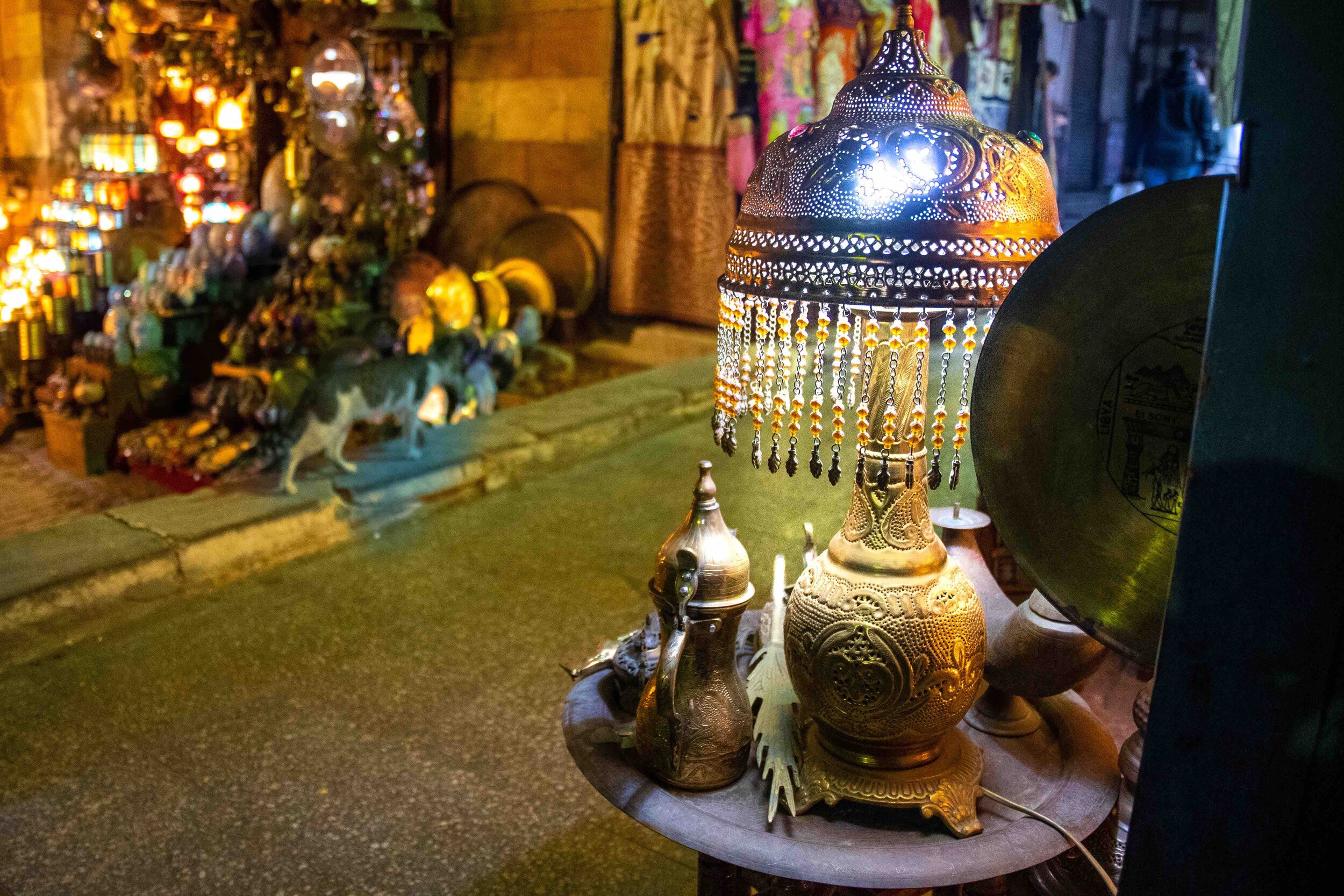
Day 1: Cairo - arrival
Day 1 (Dec 26): late arrival in Cairo, but Cairo never sleeps. Getting out and absorbing the atmosphere of this amazing city, tasting my first koshari in About Tarek and getting blown away in presuambly oldest caffe in Cairo, El Fishawi. Overnight in the atmospheric Pension Roma in the old city.
Bringing luggage to Pension Roma
I arrived late but popular Abou Tarek restaurant is opened till very late....
....and it is a famouse place to taste Egyptian Koshari - chick peas, pasta, fried onions, and tomato sauce, served on top a bed of rice and brown lentils. Yummy indeed!
I take Uber (working greatly in Cairo) that leaves me in the middle of this crowd...
...close to Mosque Al Husayn.
Historical caffee El Fishavi, astonishing view that opened to me across a small pedestrial passage.
...where you are probably never alone and people are just willing to chat, as this family from Libya.
People at the tables are "hiring" singers to sit with them and to play traditional songs. Everybody is singing. I can't remember such a cheerful spotaneous atmosphere in a European city and without alcohol!
....drinking minth tea....
and smoking shiha, as these two sisters.
It is after midnight, the shops start to close and I can't believe I am finally in this city.
One can find empty corners...
...but only few steps away life continues.
Articles as from the Thousand And One Night all around me...
... that are appreciated also by many street cats.
Last magic view to absorb and I head...
..back to the hotel,
where I fall happily asleep in my room full of charactecter with a bathroom separated by a wooden paravent style walls.
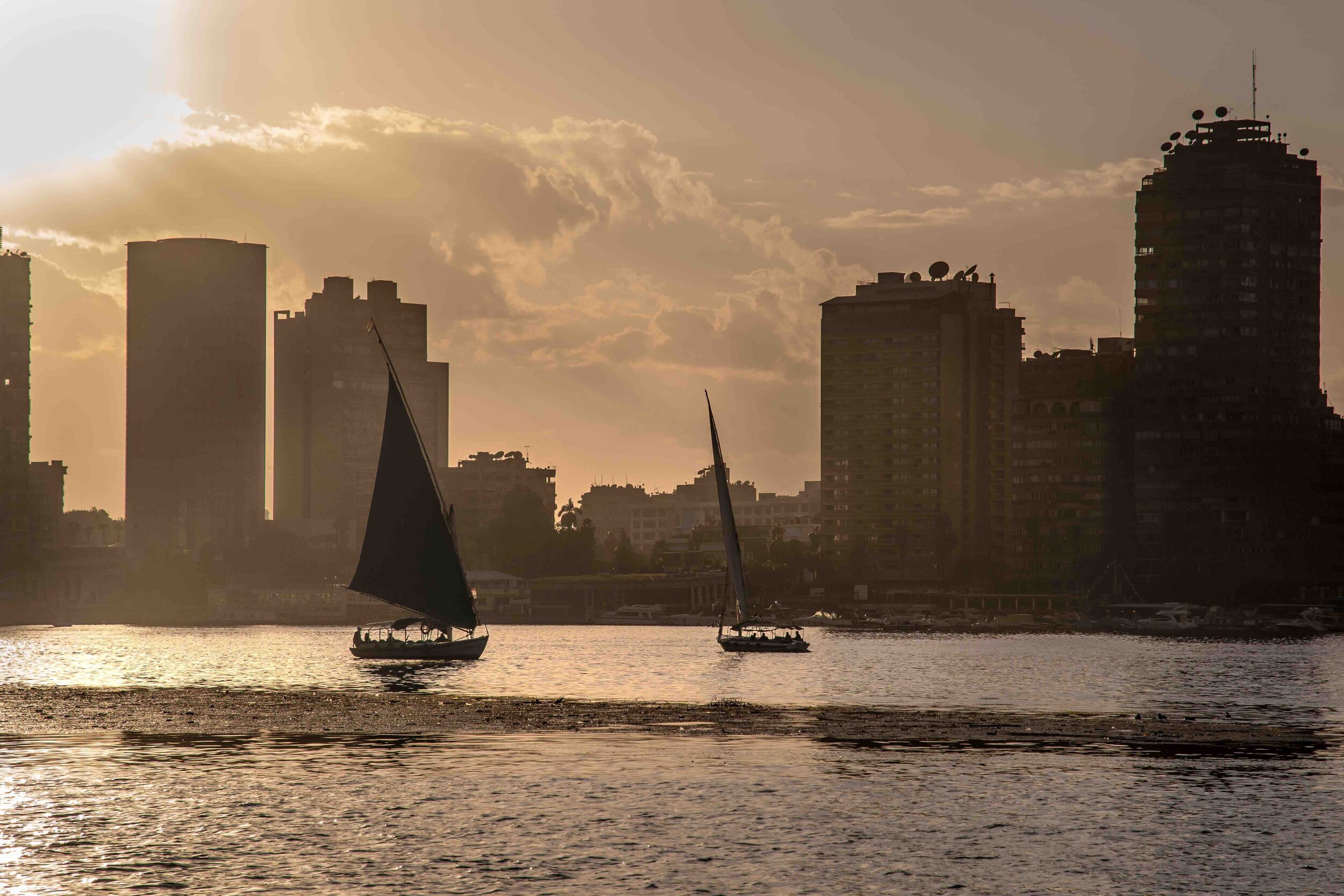
Day 2: Cairo
Day 2 (Dec 27): Full day explorarion of the Egyptian Museum - from the opening to its closing. You can’t get enough of it, if these objects talk to you. Getting fresh air on a felluca ride from Dok Dok, watching the Sun going down, followed by a touristy dinner cruise with Nile Maxim.
Behind this door ancient stories are waiting......in the Egyptian Museum. It helps to come at least little prepared.
Buying your ticket, make sure to get extra ones for Royal Mummies Halls and for photos. You can also get a certfied guide - with a good sense.
I start with a tour with a guide and then I make a second round to try to absorb it all.
Small clay head - 6000 years old, one of the earliest human representations in Egypt.
Narmer Palette (3100 BC) marking unification of the Upper and Lower Egypt. On this side of the palette, Narmer wears Red Crown of Lower Egypt, whose symbol was the papyrus. You should come to see the Upper Egypt crown on the other side.
Pyramidion - the topmost stone - of the pretty much fallen-apart black pyramid of Amenemhat III at Dahshur.
Stare into the eyes of Djoser (3rd Dynasty, 2667-2648 BC). Limestone statue - oldest of its kind - found in serdab of the famou step pyramid.
Imhotep, chief architect of Djoser, who designed the step pyramid. He was venerated as a god of architecture, mathematics, and medicine in the Greco-Roman period.
Triad of Menkaure/Mycerinus (4th Dynasty, 2532-2503 BC) - builder of the smallest pyramid in Giza. On his right goddes Hathor.
Survived to perfection thanks to the hard black shist stone that challnged the artist.
Chephre/Khafre pharaon (4th Dynasty, 2558-2532 BC), builder of the 2nd pyramid in Giza, was harder than this black diorite.
Chphren head is protected by the falcon god Horus.
Magic look of Ka’aper, a scribe and priest (4-5th Dynasty). Famous for his eyes with copper lids, whites from opacuqe crystal, corneas from rock crystal, and pupils from a black paste.
Another magic eyes at this limestone painted statue of the seated scribe.
Magic look of a noble man from the 4th Dynasty...
seated next to his wife in almost life-size.
Wife's look is not less impressive.
The family of Seneb, sacerdote and chief of royal wardrobe in 6th Dynasty. He was a dwarf, note the space his "legs" is taken by his kids.
Mentuhotep II (2055-2004 BC, 11th Dynasty). The first ruled of the Middle Kingdom with red crown of Lower Egypt. Found by Hward Carter in Thebes, as ground gave way under his horse.
Sphinx of Pharaoh Amenemhat III (1855-1808 BC, 12th Dynasty) with human face and big ears.
Wooden statue of Ka (spirit) of the ruler Hor Auibre (1775 BC, 13th Dynasty) with magic eyes.
Painted limestone head of Hatshepsut (1479–1458 BC, 18th Dynasty), the second female pharaoh in history.
Akhenaton (1375-1334 BC, 18th Dynasty) who promoted monoteism with Aton, God of the Sun. Note the strange belly of the statue. The first 4 years of his reign he was known as Amenhotep IV.
Akhenaton offering to Aton, God of the Sun, during this period never depicted in an antropomorphic form, rather as a solar disc whose rays are embracing the royal family.
Marvelous frescoes from the Akhenaton Temple, cca 3300 years old colours.
Photo of the chamber of the Tutankhamun tomb found almost intact by Howard Carter in 1922. The boy-pharaoh was the son of Akhenaten and stayed on throne only 9 years. Museum room 3 with the most precious objects including the death mask can be visited, but photography is strictly forbidden.
Ka of Tutankhamun.
Golden throne of Tutankhamun (1341 – 1323 BC, 18th Dynasty), commonly referred to as King Tut. With his wife Ankhesanamun, their robes are from silver, under the god Aton.
Full view of the "lion" throne, possibly made originally for his father Akhenaton.
Another magnificent inlayed throne of Tutankhamun.
External gilded wooden shrine - many of them, decreasing in size - were holding the sarcophagus of the pharaoh in their center.
... and detail of the decoration with gold and lapis.
Canopic jars in alabaster that were then holding golden jars with Tutankhamun organs.
Amazing golden objects from the Tutankhamun tomb.
The tomb of Yuya & Thuyu, Tut's grandparents, was found almost intact. Death mask of Yuya...
... and especially Thuyu, are true masterpieces.
Ramesses II The Great (1303 - 1213 BC, 19th Dynasty), the most powerfull ruler of the New Kingdom as a child with his finger in his mouth.
... protected under the breast of a giant falcon, god Horus.
This size of this statue reflects better the name of Ramses II "The Great".
Death mask of Psusennes I (1039-991 BC, 21st Dynasty).
Statue of Alexander the Great, mixing local Egyptian style with "contemporary" Greek.
Animal mummies had a special role in Ancient Egypt but these are truely different.
We learn a lot about everyday life in Egypt from object like this wooden ship.
Jewelry...
Diadem of Sithathoriunet, princess of the 12th Dynasty.
Impressive example of famous books of dead, manuals how to pass - successfully - to the afterlife.
Before leaving, tribute to the founder of the museum, August Mariette (1821-81), who fighted for keeping Egyptian treasures where they belong. His tomb is watched by busts of famous egyptologists.
To absorb emotions, I need some fresh air. I head to Dok Dok on the Nile shore.
Catching a feluca ride is easy.
Happy, also with cut feets :-)
Felluca captain on our return at dark.
Nile Maxim dinner cruise departs near the Mariott hotel - worse to sneak in.
Nile Maxim cruise ship.
Belly dancer at the ship.
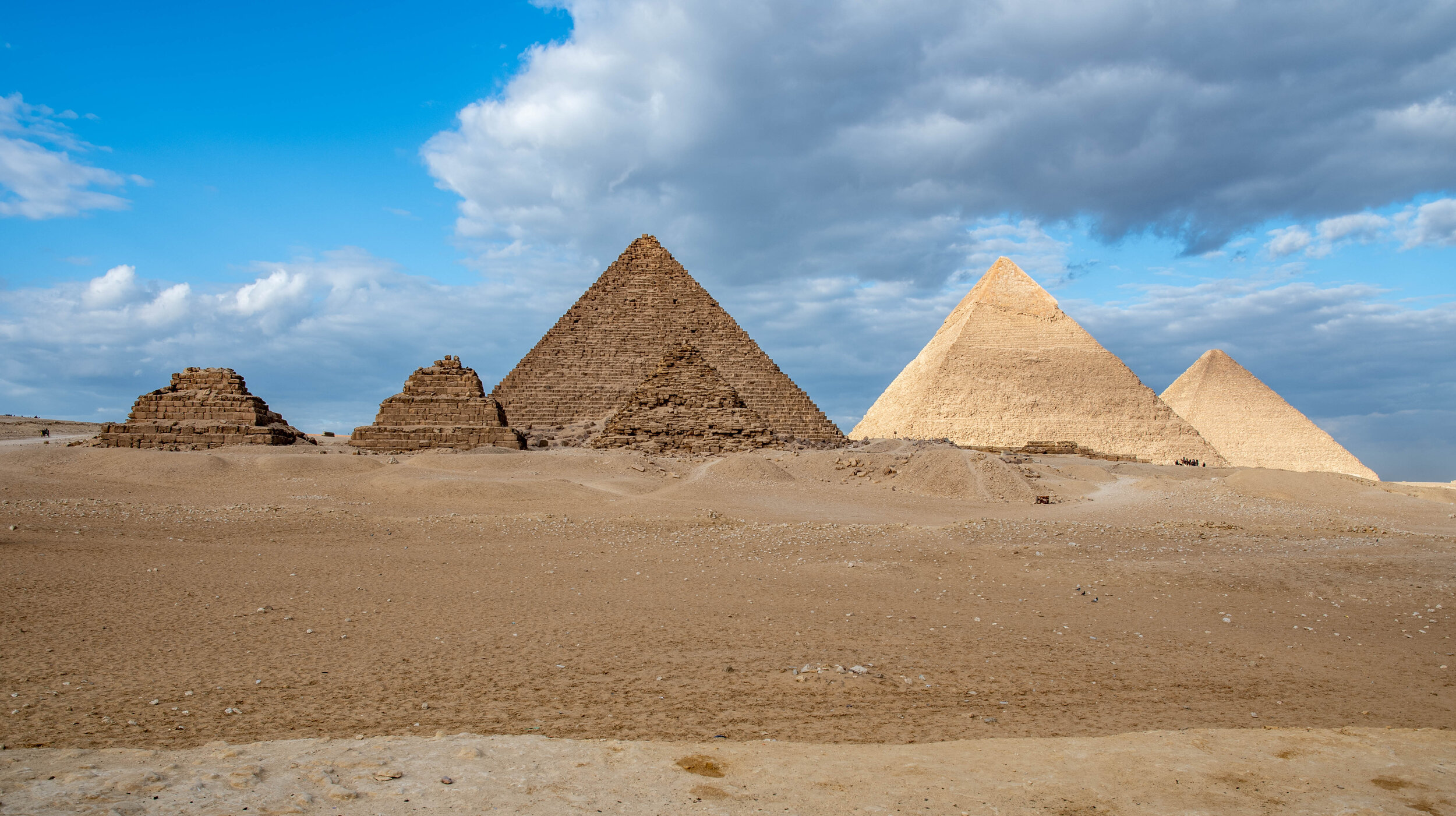
Day 3: Gisa plateau
Day 3 (Dec 28): Early morning taxi to Giza, first glimpses of the giants appeareaing above the buildings. Whole day exploration of the pyramids in Gisa (Khufu/Cheops pyramid and solar barque museum, Henutsen (Cheop’s wife) small pyramid, Chephren/Khafre pyramid, Menkaure pyramid), various tombs (Hethepheres, Qar and son Idu, Meraksankh III, Hemiunu tombs) and The Great Sphinx. Finalized by camel ride, ok, I know, touristy, but I loved it. Watching the night sound and light show from the terrace of the Gisa Pyramids Guesthouse.
Bringing my luggage to Gisa Pyramids Guesthouse at sunrise - the terrace is breathtaking and I can't wait to get closer tho these giants.
The hotel has a perfect position for taking portraits of the Grand Sphynx.
First close up of the Cheops pyramid. People queuing to enter inside appear as small ants.... but first we head to the tombs nearby at the Eastern Cemetry.
Interior of my first tomb - it happens to be the tomb of Queen Hethepheres, mother of Cheops and wife of Sneferu. Funeray furniture and jewelry were found here, now in the museum in Cairo.
The tombs of Qar and son Idu were opened after restoration only in 2019.
The statues carved in the rock are everywhere...
..plentifull...
The tomb of Idu.
Tomb of Idu in a very unusual position.
Time for little air and yes, I do want my photo with The Great Pyramid behind me!
Burrial chamber of Henutsen, wife of Cheops, in the core of its small Queen's pyramid.
Walking to the interior of the Eastern cemetery you can play with perspective - in front dark flank of Queen's pyramid of Cheops and then the top of Chephren pyramid placed on a higher ground. Unlike others, its top preserves the polished limestone casing.
Just another example of great vistas.
We reached the tomb of Meres Ankh III.
With many beatiful statues.
and paintings.
and hieroglyphs.
Walking more on the edge of the plateau, I can look back on the terreace of my hotel.
Obligatory photo with all three of them.
Making my way back towards the Cheops pyramid.
... to enter this strange shape museum, holding the wooden solar barque, uncovered in 1954.
Only this one, among 5 of them, was put together from 1224 pieces as a big puzzle.
It was used to bring the pharaoh mummy on the Nile to the valley temple and then up the causeway to the pyramid.
It was found here, in this 30 m long pit. Other 4 barques were burried back after they discovery to preserve them.
The 8.5 high Great Gallery of the Cheops pyramid.
The burrial King's Chamber is made of red granite blocks, polished into a perfection, nothing can be slided between the blocks.
Hot and humid. But happy I made it. Cheops pyramid closes at noon for one hour for ventilation.
Me in the Great Gallery.
Chephren pyramid does not close at noon. Being not the biggest one, much less people enter here. This is the burrial chamber... and guess, who discovered it?
You can be alone there...
and play a freshly awaken mummy.
The passage can be quite low. Nothing for the claustriphobics!
The full size of the Cheop's Pyramid completed in 2750 BC, originally 146 m high. Till now, 9 m weathered off.
The zoomed image to underline the scale of each block.
Chephren pyramid, with its 136 m height is the second in size.
Detail on the preserved casing on the top of Chephren pyramid.
And one with the Chephren's Pyramid too!
Heading to the 3rd, Menkaure pyramid.
Menkaure died too early and it was never completed. Unfisinished granite blocks lie around.
But on this side the granite blocks are just perfect.
Next to the pyramid is Menkaure's Funerary Temple, with the Chephren pyramid behind.
And also Menkaure's pyramid has its three small Queens' pyramids.
Some more perspective plays.
Menkaure and its three Queens' pyramids.
You can catch a ride in a carriage or have fun watching them racing around.
The first and the second on an obvious plateau.
Ok, I had to have one like this too.
Heading to Hemiunu tomb.
...where the cow is giving eternally birth.
Watching the scenes from the ancient everyday life.
Food is important also in the afterlife!
Making the way down to the Chephren's Valley Temple. Before sunset, the atmosphere on the plateau is magic, with much less people around.
Chephren's Valley Temple, one of the best-preserved structure from the Old Kingdom. An absolute wonder of engineering and architecture.
The temple is made of impressivly worked granite blocks. Here were placed 23 diorite statues of Chephren .. only one made it to these times, now in the museum in Cairo.
The Great Sphinx, probably the oldest monumental statue from the period of reign of Chephre. Cut from the limeston bedrock, it stares on the generations passing by during millenia.
I am happy that I also passed by.
A complete view on the Chephren's funerary complex - Valley Temple, Sphinx, causeway and the pyramid. From here starts my camel ride, booked ahead by my guide.
I loved this camel ride before sunset. African camels are incredibly tall but it is so much rewarding feeling to pose in a location like this.
And I am not alone to think it is a nice experience. The location with a view on all 9 pyramids- from left to right - three Queens' + Menkaure, Chephren, and Cheops with its three Queens' pyramids).
Frontal photo of the Sphinx and Chephren's pyramid was something on my bucket list here.
Ready for the sunset on a terrace of my hotel.
Imperssive play of light at sunset above the Menkaure's complex.
Sunset view from my hotel's terrace. Simply magic. Plan to have a great view point at this time of the day.
The natural light show above mysterious giants is breathtaking.
Menakaure's complex in fire.
After the natural light show, sound and light show with stories to listen to starts.
Silent magical Sphinx staring into the dark - what to add.
Blue Chepren's pyramid? Why not!
Detail on the building blocks of the Cheop's pyramid and two Queen's pyramids.
The building on the left is the solar barque museum. Cheops and its Queens pyramids are the closest ones to "my" terrace.
Hotel prepared for me this home-made dinner based on camel meat - offered by my giude, thank you!

Day 4: Black and White deserts
Day 4 (Dec 29): Early morning pick up from Giza and almost 4 hours drive to the Bahariya Oasis. Quick change of the car, my guide and a 4x4 car are waiting for me along the road. My two-night desert adventure, organized by The White Desert Tours and International Hot Spring Hotel, starts. Stop in a panoramic point of the Black Desert, with young vulcanic cones formed by black lava and partially covered by white sand blowen over them. Amazning lunch in a Small Oasis hamlet called El Haiz hatte, a very local place with a stream flowing across the dining area. Crystal mountain with enourmous barit and calcite crystals of hydrovolcanic origin. When the view on Wadi Agabat opened, it felt like being in a sci-fi scene. Finding the place to camp, next to a fire, under the stars and our Milky Way. Just a big-eared desert fox came over night to chew on my shoe :-)
Today I enjoy quiet sunrise beakfast at splendid terrace of the Gisa Pyramids Guesthouse.
The trnaquility and the view are surreal.
Waking up early, you can have it all for yourself.
Chephren pyramid reflecting the rising Sun..
Giza is waking up (if it ever sleeps).
Last view and it is time to meet the driver to take me to the Bahariya Oasis.
It take about 3 to hours. Simple place along the road to take a coffee...
After some more driving, descent towards the oasis.
No time to loose - plan for today is full. My guide and 4x4 is wating along the way on outskirts of the Bahariya oasis.
Black Desert - black volcanic hills made of mafic rock called dolerite.
Contrastic colours of black lava and sand.
Dust from weathered volcanic rocks covers the area with a black veil.
I read that that age of the small volcanoes is 180 million years but to me they look much younger. Can be that with so little rain all stays preserved much longer?
I was told the shot looks as from Bollywood production :-)
Sometimes you get the 3rd colour - red iron quartzite.
Wilderness.
The concentration of these volcanic cones is impressive.
Small Oasis hamlet called El Haiz hatte - with a pool of spring water pumped in.
Meeting a group of Japanese bikers with local guides.
Lunch from local products - tomatoes and onions are the top. Note the water stream flowing across the dining area.
It is a very local place with unique atmosphere.
Locals love motorbikes.
Back to the main road heading to the White Desert.
Close to the famous Crystal Mountain we meet more cars.
Crystal Mountain - beatiful place - please respect it. Do not take home the crystals.
The size of these crystals is impressive and they are all around. It is not quartz!
Another viewpoint that makes from the big 4x4 cars small dots.
Perception of space around is what makes me feel free and happy. Even better if it is a geologically unique place.
Kind of stalactites... but these crystallized out from hydrovolcanic solutions. Is the car behind so much smaller? :p
Heading to a nearby special place...
Enormous vein with calcite and baryte crystals of hydrovolcanic origin.
Crystal bouquet. In volcanic areas hot fluids circualte and dissolve surrounding rocks; as they cool down they deposit the material.
Several meteres long longhydrohermal vein. Material started to deposit from the walls of the fissure. You can observe how the size of crystals grows towards the center: crystals had more time to grow as the cooling became slower.
When the view on Wadi Agabat opened, it felt like being in a sci-fi scene.
I haven't seen a photo of this place before coming. Often, the biggest emotions come from unexpected.
The cars in the mouth of the wonderland below are so photogenic.
White chalk preserves many fossils and shells. Perspective plays are so easy here.
The joy spreads among all, no matter the origin or religion.
Simply happy.
Descending by foot while watching the cars becoming smaller and smaller.
White chalk looks as patches of snow in spring.
Focal point attracts also clouds.
Checking the "snow" from nearby.
Found my guide!
Looking for a place to camp overnight. Driving over some dunes was crazy!
Semiprotected night camp. We brought also fire wood!
The camp is built next to the car. It feels protected. You can ask for a tent, but I reccommend not to: feel this place yours and you can't do it with a roof above your head.
My guide is an excellent cook! Note local textiles and carpets on the floor.
And the food tastes the best when prepared on an open fire.
And I am not the only one whe thinks that! Desert fox - with big ears to notice the smallest movement from far away - dares to come very close to us. And over the night it chews on my shoe :-) I keep it as a memory.
Tranquil image to remember when you need to calm your mind.
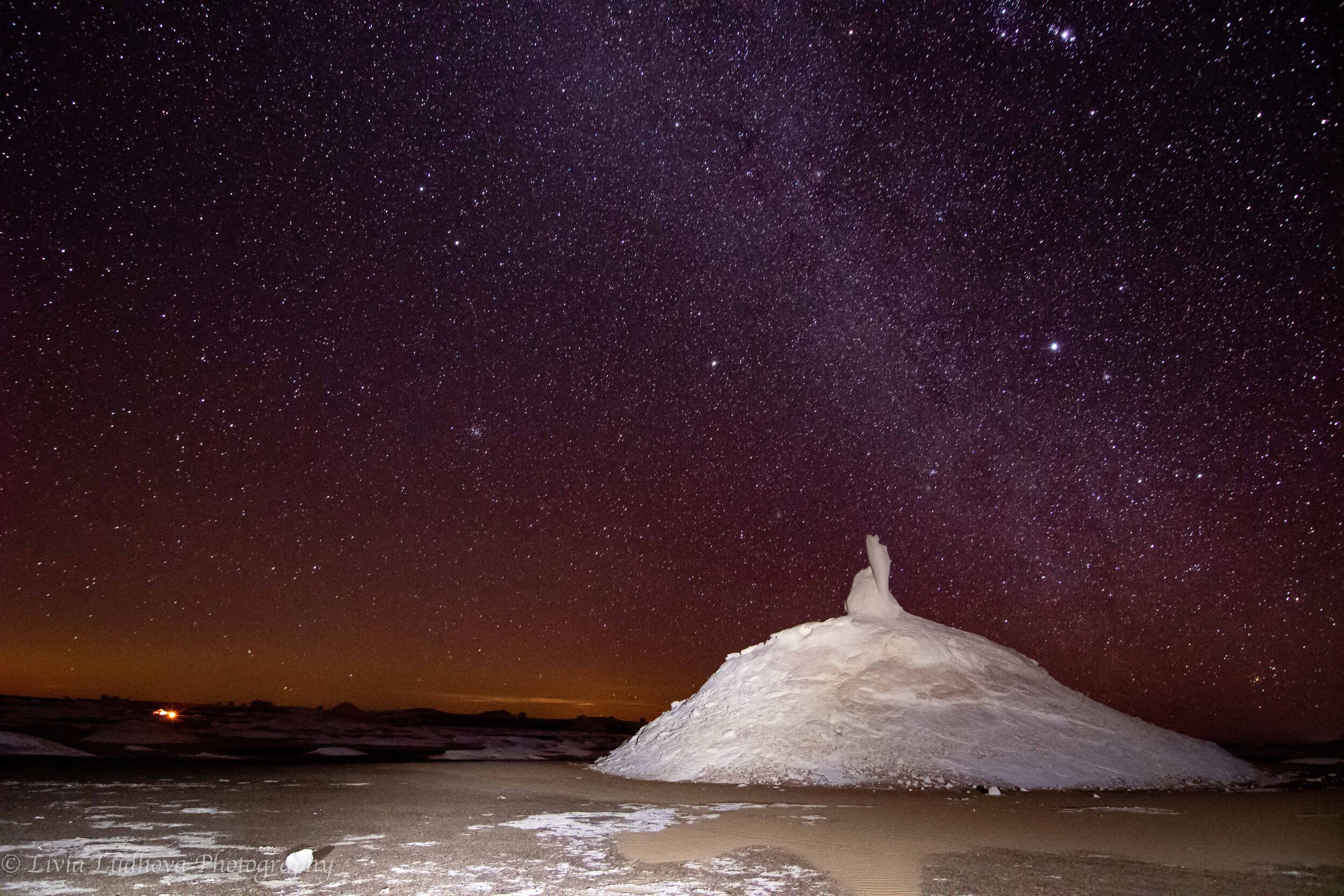
Day 5: White desert
Day 5 (Dec 30) We drive across the White Desert, observing a drastically changing scenery. Small palm-filled oasis, rocky viewpoints, springs, tomb with human relics from the Roman period. Field of white sand sprinkled with iron-rich crystals and concretions of all kinds of shapes. And then snow-white chalk formations of all forms and sizes start to appear, going in crescendo in all senses as we drive across - they give the name to this place. The camp is set not so far from the most famous star - "mushroom and chicken” . You can’t imagine the sunset in this place, until you live it - the play of colours all around you is just magic and you are swallowed by it. And when the night falls, stars shine bright above the black silhouets of the statues carved by the sand blown by the hot desert wind
Leaving the camp is euqally interesting. Yeah, we go that slope is our way....
The oasis of this size do surprize me. This part of the desert is sprinkled with small groups of palm trees.
Space all around... note horisontal sedimentary layers that unite small hills.
This day I remember as a complete freedom. We could stop and climb any hill for amazing views.
In the background white limestone that awaits us.
Periscope from a weathered rock.
Just pretending... I would never be able to drive here.
Another concentration of life.
Below palm trees is a huge amount of dry material.. wondering how good it is for a camp fire.
Let's climb also that one!
Approaching the hill of my choice.
We are not the first ones here... but the guide let me believe is was never on top :-)
The perception of vast space around to it fullsest.
It looks to me like a kitsch drawing.... car, hill palm... and instead it is a reality.
Sometimes it does rain!
A version without the car.
Ain El Maqfi should be the name of this small oasis...
..surrounding this spring that is supposed to date back to Roman period.
Not really sure what kind of fossils are these.
This is a serious spring that continues to attract people.
A tomb from the Roman period.
No special mumification, just special environment of this dry land.
Impressive detail: memento mori. Who knows who these people were.
Lunch time under the palm tree.
in style always!
Detail of the massive lower part of the palm tree.
This part of Sahara is pretty rocky, I take occasion to climb this dune we "met".
The dynamics of falling sand is impressive.
We came to this special place... the "standard" beige sand with snow-white chalk plus... very heavy, iron rich pieces lying on the top.
They have all kind of shapes. Was told it was iron-rich dust from the black desert that was blown here, at the bottom of a lake, where they oxidized and created these forms of hematite.
Detail of this peculiar landscape. Crispy.
I like playing with perspective.
The concentrataion and size of white rocks is increasing.
The small hematite crystals are everywhere.
Crocodile saharianus
Did ancient egyptians copy it? ;-)
If you thought the hematite area was small... well, it is not!
After an exciting walk, time to move on.
White desert in it crescendo!
While driving (not me obviously), I can't stop enjoying making photos of details of the rock formations around.
Zooming towards what awaits us.
I have never seens something like this. It is not a single strange shape, it is a total wonderland.
Blueish veil is magic.
Can you guess from which side the winds usally blows? These forms are created by erosion with sand grains blown around by the wind.
Short stop to take it all in.
I do need a photo of myself too.
Somebody forgot to make also some chairs around that table!
Shell?
Hippo?
Old man?
We are coming to the heart of the White Desert and we meet some more cars. They help to appreciate the size of those formations.
This is not a movie, this is real.
This is the most famous rock here.. mushroom and a chick. It is protected with a fence.
At this time of the day, directly illuminated by the sun, it is just plainly white againts the blue sky.
Unless you play om yhe computer a bit/
Version without any car.
What shape can you see here?
For my memory.
After I have enough mushroom photos, I play with my big lens, hunting for interseting formations .... they are all around!
We camp in this central area. We drive around to find a place we like.
Detail.
Walking strangers add to the surreal atmosphere over here.
You can let your phanrasy go.
The sun starts to set down.
Aline woman.
I wanted to camp here, it was targeted also by another group, so we move away.
The colours intensify.
So here we stay. Guide makes the camp, and I leave for a photo-hunt.
Should you come here, spend a night.
The ocean of light and colours will overwhelm you.
I do not fully understand this strange formations on top. Probably a softer layer, from which only little material remain... but still.
Approaching "my" alien woman.
The best colourful moment is coming.
Praeludium in crescendo. This is my favourite shot. I could not believe my eyes.
And with some more panorama.
And at this point, no words are needed.
Just watch.
Marvel.
Listen to.
And then extasy comes, I would even screem from the emotion, but you can't break the silence aournd, you have to keep it all in.
Can you see it in my eyes?
Summit.
Walking back to camp.
Witch appeared on the horizont.
After dinner, some night shots.
Endless stars.
Another guide passed by to say hi. Special moment to sit by the fire with people who call this place home. They saw almost all Sahara and still say this place is one the very most special ones.
Explorer picture before the cold night. It was indeed cold, but I got few thick camel blankets.
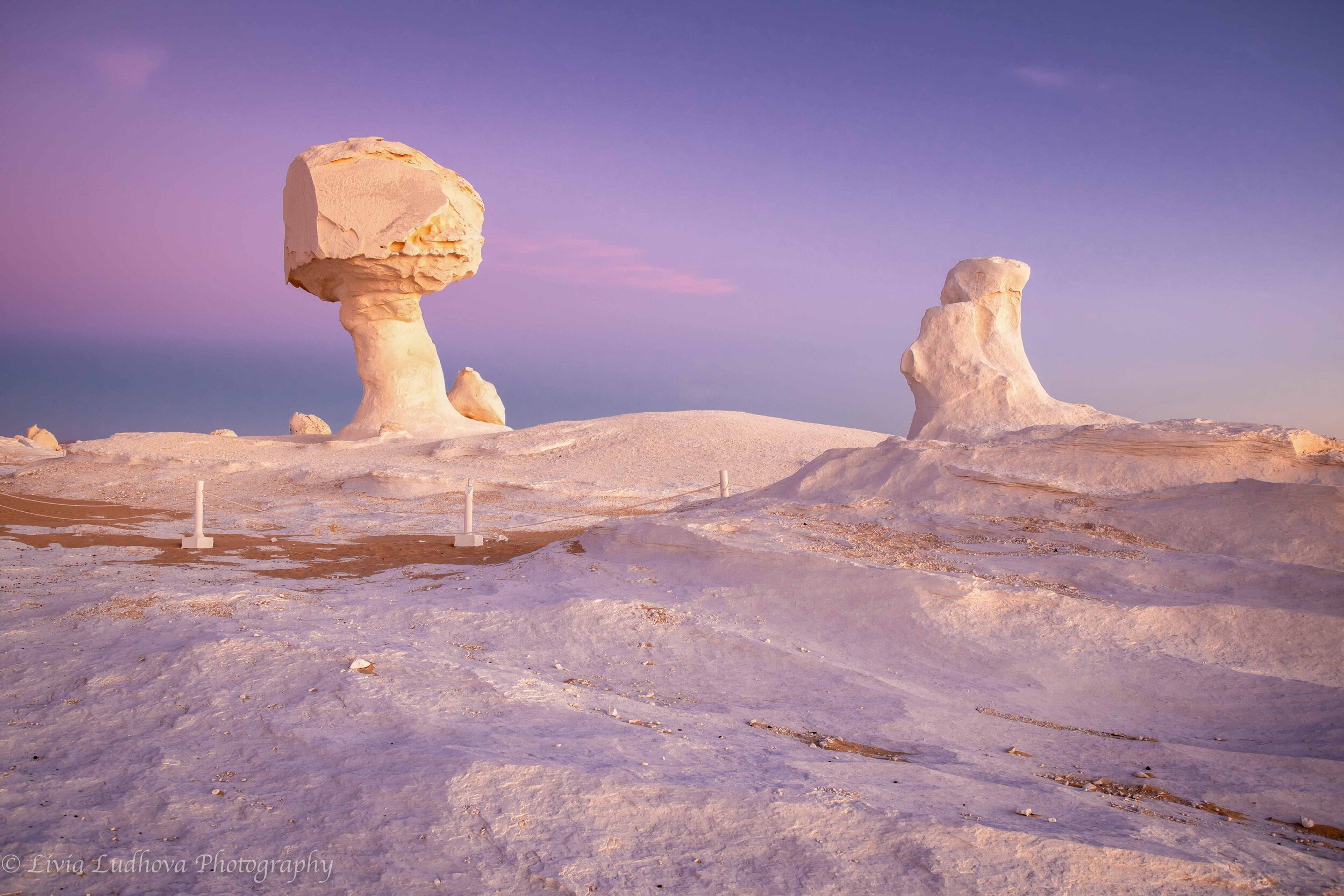
Day 6: White desert and Bahariya Oasis
Day 6 (Dec 31) Waking up before sunrise, to catch the light spectacle of the hot ball going over the horison. Then making our way through stunning white formations up to the main road and to the Spring Hotel in the Bahariya Oasis, rich with date palms. Short rest and I explore the area…. crazy drive to the Gebel El Dist, a pyramid-shaped mountain, local landmark, where fossils of dinosaurs were found. Watching the sunset from the Gebel Al Inglez, Black Mountain with the rests of a house that was a look out point of Captain William during the WWI. Back to the hotel, swim in a pool filled from a local hot spring and at hotel’s Peter’s bar the new year meets me happy dancing to the tones of local live music.
Wake up before sunrise and jump to my tripod, to get the first orange shades on the East side
More light is coming and we need to get to the mushroom for the most colourful spectacle.
Here it starts, the next few pictures without any comment, hope I can pass to you at least a small fraction of the magic I experienced.
Take home message: do come in person to check what justice my photos make to this place!
Can you see those cars? It helps to appreciate the size.
The last rays of the sunrise colours on this snowy area ;-)
and the detail of the "snow" dunes
The Sun is up on the sky that turned to the classic blue.
We are exiting the main area through still very spectacular formations.
The last glimpsed of the main area.
Shared with more lucky ones who had the privilege to be here.
Reall last one...
This part is already close to the exit to the main road.
This was previously the main attraction, before the current main road was opened.
And there are several similar formations around.
The last photo of "my" 4 x 4 in the field.
On the way back to Bahariya, we stop at the area of Crystal Mountain, to take photo of this formation that I missed before - just near the main road.
The road to Bahariya. The area to the north of this road is closed for tourists. I do hope the situation with Libya will be solved and another visit to this special place now off limits will become possible.
We reached the International Hot Spting hotel in Bahariya, that organized my whole trip in the Western Desert.
The setting is just splendid.
The garden well cured and the architecture in local style.
Above the hotel this small hill.. a comfortable staircase leads to the great view points of the oasis.
The shower after the camping was just needed.
View of the green area of the hotel.
I can understand now that Bahariya is famous for dates :-)
The air is so clear and the colours so contrasting.
Ok, enjoyed the hotel, what else can I explore? Make sure before booking the tour to check the schedule on the return date.
Baharyia has a lot to offer. With some extras, I start to explore the oasis itself.
This is another hotel with a very particular exterior. Something to check next time?
An authentic local shot.
We explore the area of this salty lake. Quite surprising the blue water in contrast with the typical reddish desert colour.
Date palms on the horizon make a nice green belt.
Salt crystallized from the over-conectrated water at the lake's shore.
Traditional architecture is quite spectacular.
White houses contrast all the rich colours of the landscape around them.
We stop at a view point.
Small green fiels cured and irrigated by local farmers.
A shot of me...
before we make a crazy drive to the Gebel el Dist - it is much terrible up and down than in the whole White Desert!
Climbing the slopes of the Pyramid Mountain, where fossils of dinosaurs were found.
We meet more tourists here, that are not of the same blood group though...
Watching from a safe distance can be amusing :-)
Then we cross local backstreets, a photographer's paradise.
Bahariya is full of hot springs. Unfortunately, women have to bath pretty covered.
Local camel, poor thing, does not have much freedom to move.
Local transport.
Then the sun sets down...
Peter's bar in the hotel. Local band did amuzed us... few tourists and the stuff.
We had a lot of fun in this special place. We had no idea how different 2020 will be. Its first moments could not be better though,
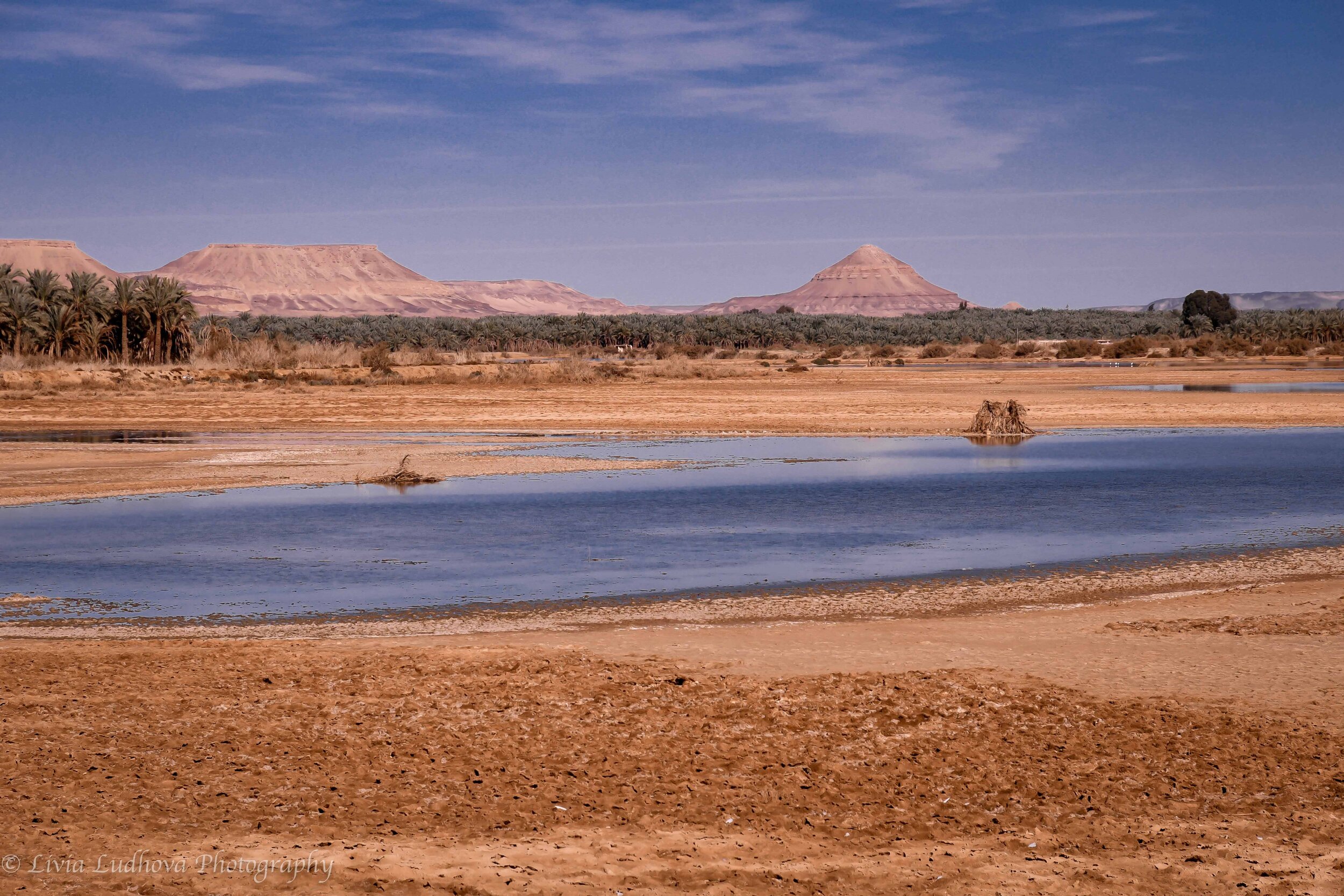
Day 7: Bahariya Oasis
Day 7 (Jan 1) Day starts exploring the local archeological treasures in Bahriya: in-rock carved and brightly painted Tomb of Zed Amun Iuf Ankh, a rich man living during the 26th dynasty, the Temple of Alexander the Great (332 BC) and then the famous Golden Mummies Museum, holding few exemplars of the gold-plated 2000 years old mummies from the Greco-Roman period, found among many others in the Valley of the Golden Mummies. Then local shopping and drive back to Gisa, to the Hayat Pyramids View Hotel with astonishing view on the pyramids, from quite a different angle then I had few nights before - directly from my room or from the roof-top terrace, enjoying pigeon-based dinner and yet another sound and light show illuminating the ancient gigants.
Pretending :-) at International Spring Hotel in Bahariya
In the small museum in Bahariya are exposed these gold plated Golden Mummies.
These 2000 years old mummies from the Greco-Roman period where found among many others in a nreaby burrial place.
The Tomb of Bannentiu from the 26th Dynasty, cca 2600 years old.
The colours are extremly vivid.
It is all cut in the rock. Zed Amun Iuf Ank was probably a merchant, wine trader, who had enough money to pay for all this.
Entrance to a side burrial chamber.
The tomb of Zed Amun Iuf Ank, father of Bannetiu. The wide decorated columns are special and symbolize lotus flower.
Whispering to Anubis and Horus.
Drive through the streets of Bahriya is very colourful.
Locals are a gem for photographers.
View point of the date palms with the pyramid mountain dominating the skyline.
Temple of Ain Al Muftella, 26th Dynasty, dedicated to multiple deities.
Temple of Alexander the Great (332BC), the only known temple of this Macedonian ruler in Egypt.
The complex is quite large and built of mud bricks.
Is this Alexander the Great in Egyptian cloths offering to gods? The temple was dedicated to Amun and Horus.
Alexander the Great might pass this place on his way to Siwa oasis, to visit Oracle of Amun.
Colourful street.
Could I turn to dates' seller?
Daily life in Bahariya.
I am impressed by the contrasting colours.
Family life all the same everywhere.
In Bahariya you do see women dressed very traditionally.
Receptions of the International Spring Hotel.
Hotel pool... mineral water is pumped in daily from a spring. Was rusing too much to jump in to make a photo when full :-)
After the half day sightseeing in Bahariya, I retruned back to Giza. View from my room in Hayat Pyramids View Hotel is breathtaking.
The angle and distance to pyramids is different with respect to the Gisa Pyramids Guesthouse, where I slept before. Change of the perspective is always good!
Detail of the illuminated Cheops pyramid and the solar barque museum.
Between the hotel and Cheops pyramid are some other buldings.
Hotel roof top terrace with restaurant - I got traditional pigeon.
Pretty kitsch.

Day 8: Saqqara, Dahsur, and Memphis
Day 8 (Jan 2) Early start to drive to Saqqara, to see the oldest of them all - the 4600 years old step pyramid of Djoser. Under the unimpressive pile of rocks - relics of the Pyramid of Unas - lies a unique burial chamber with the ceiling full of stars and with white alabaster walls with blue inscriptions - one of the first examples of the funerary texts. A lot to see - Mastaba of Ti, Tomb of Mehu, yellow painted Tomb of Maya, New Kingdon Tomb of Horemheb, mysterious Serapeum - the burial complex is vast and I wish to have more time. But time to move to Dahsur, entering the recently opend Bent Pyramid and the Red Pyramid - being alone in a burial chamber in the heart of a pyramid is unforgettable experience. And then the ancient capital Memphis with a huge statue of the mighty Ramses II. Move to the Grand Nile Tower hotel to refresh, adsorb the view of the mighty Nile from the height across the huge window in my room, and then I head for a nice local dinner and shisha in the city center, mingled with locals.
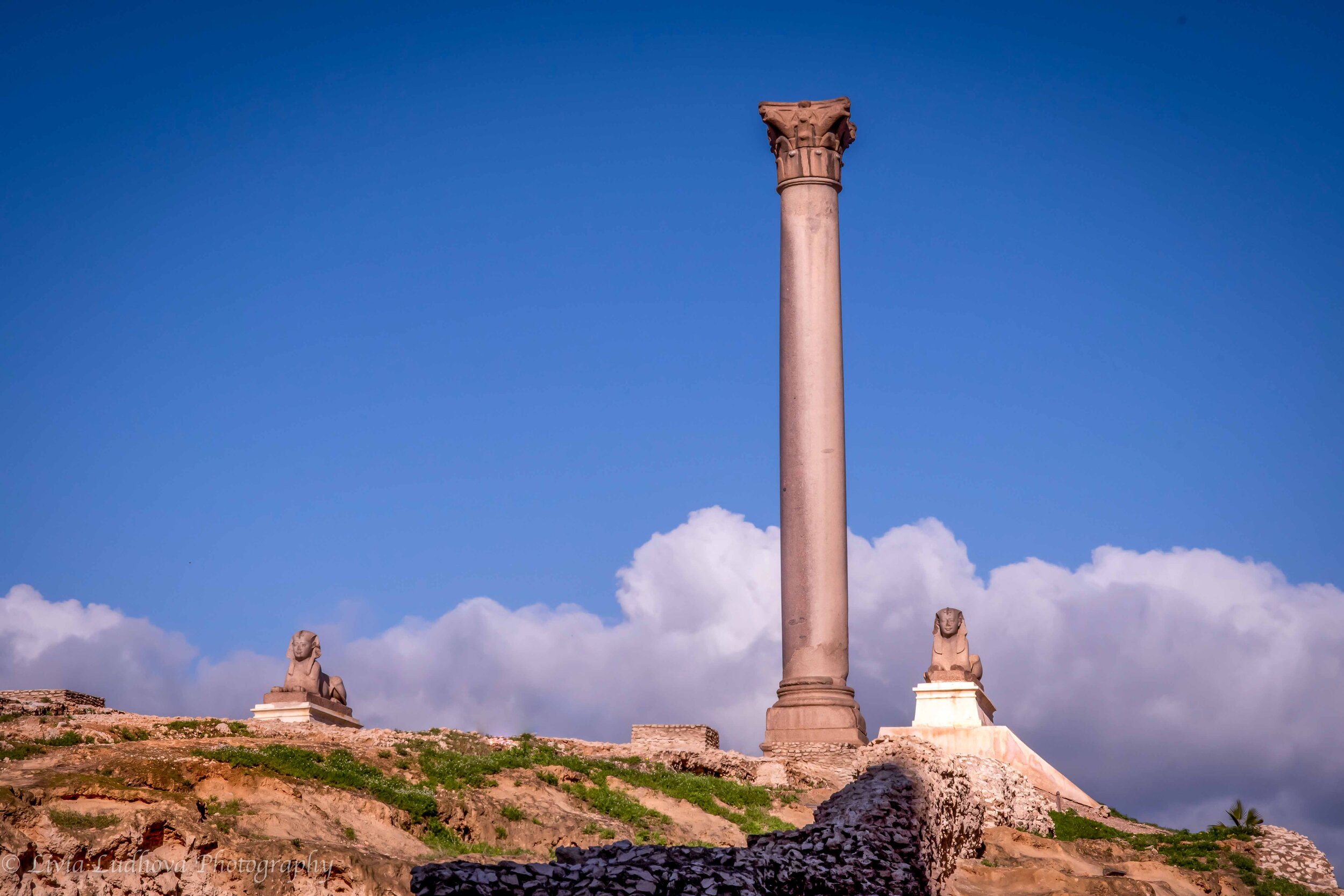
Day 9: Alexandria
Day 9 (Jan 3) 5 AM bus booked online with GoBus to Alexandria. Refreshing stylish breakfast in the historical Steigenberger Cecil Hotel Alexandria and I am ready to explore the city. Stroll along the seaside, then I head to the majestic Pompey’s pillar and the Serapeum Temple with relics of an ancient library. Deep Greco-Roman Catacombs of Kombucha Ash Shuqqafa, small but exquisite Alexandria National Museum. Then pouring rain and I head to explore the famous coffee scene of Alexandria, as in Sofianopulos Coffe Store. Rain does not stop - time for another interior stop - Bibliotheca Alexandrina is all modern, but so huge and impressive that I guess might be indeed paired with its ancient predecessor. Rain no rain, Fort Qaitbey is to be seen, with a view to a bay full of colourful boats under rainy clouds. Then an obligatory seafood dinner at Kadoura restaurant and I fall asleep for few hours in my “Mohamed Ali Clay”- named room.
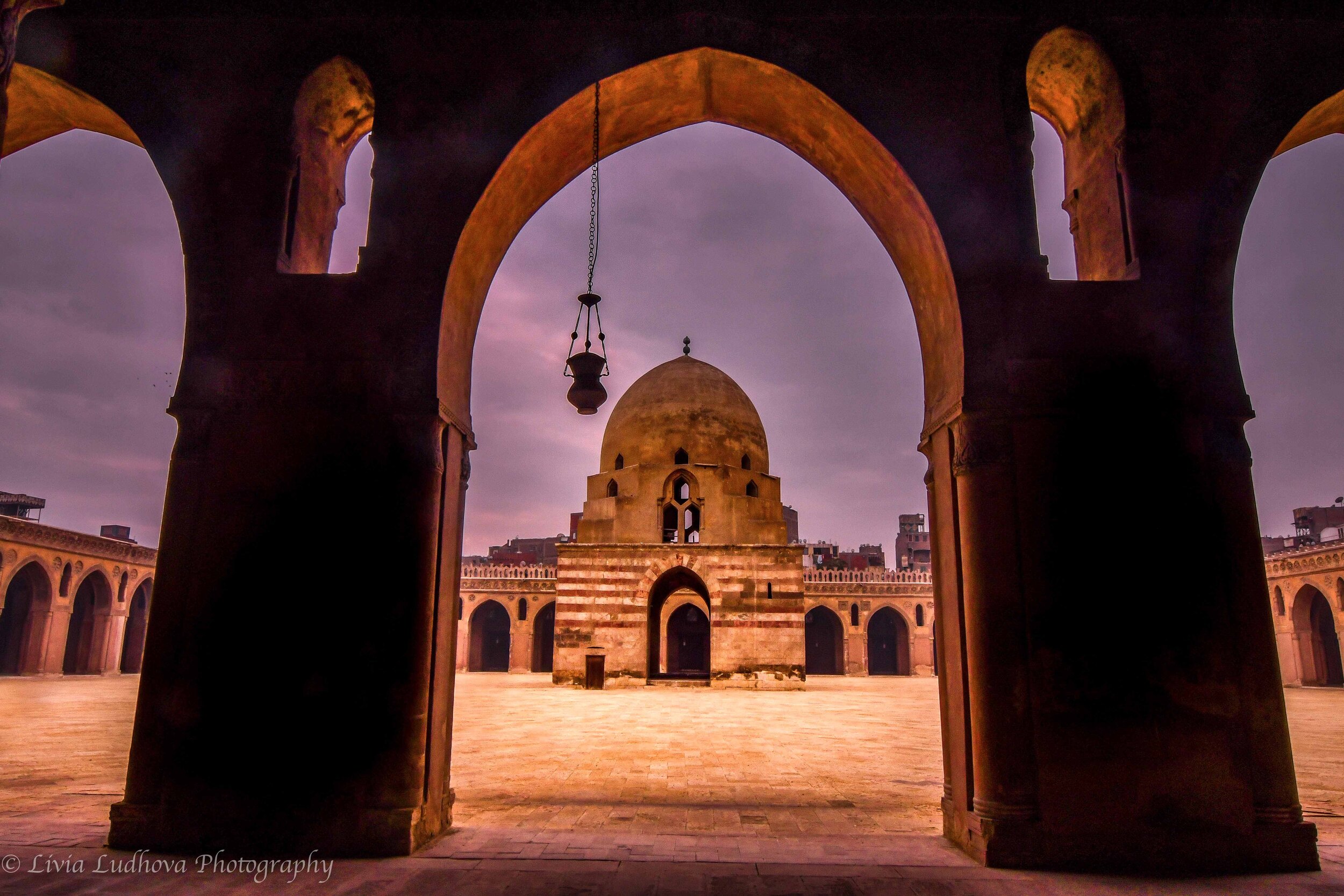
Day 10: Coptic and islamic Cairo
Day 10 (Jan 4) : 4:15AM bus to return to Cairo - fortunately I get a deep sleep along the road. I deposit my luggage in Abdeen Palace Hotel and I head to vist Coptic Cairo. Coptic Museum that opens already at 8AM and then exploring nearby historical churches - The Hanging Church, St Sergius and St Bacchus Church right next to the Sinagoga Ben Ezra. I pass by Mosque di Amr Ibn al-As. Then taxi to Islamic Cairo, starting at the oldest one here - the Ibn Tulun Mosque, with a nearby islamic old house Gayer-Anderson Museum - do not miss it. Then next to each other standing Mosque-Madrassa of Sultan Hassan and Al Rifai Mosque, that are truly impressive in size. Then I go up to the Citadel with magnificent sunset view and Mosque of Muhammad Ali. Far away one can also see Giza Pyramids. A glimpse of the splendid Al Azhar Mosque at prayer time and then I am blown away by the authentic performance (only once a week- book ahead) of Al Tannoura Egyptian Heritage Dervish Dance Group in a splendid medieval Wikala Al-Ghouri.
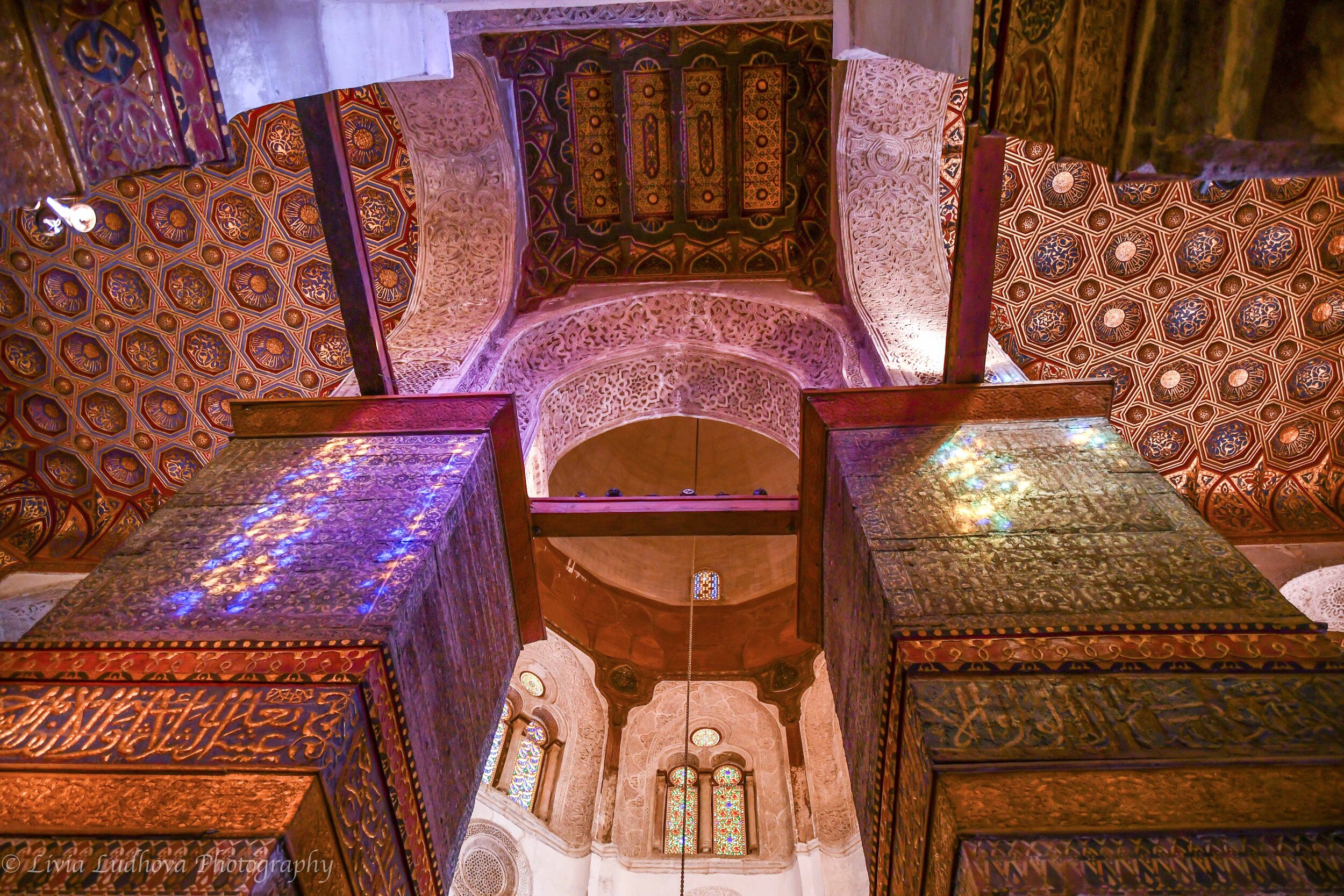
Day 11: Islamic Cairo
Day 11 (Jan 5) I start my day with the Musoleum of Islamic Art that is full of beautiful historical pieces. Then I climb the Bab Zuweila minaret from where you have astonishing view over the uncountable minarets in Cairo. I walk to Khan Al Khalili to bargain some parfumes and coffee with cardamon. Walk along the splendid street called Charia Al Mu'izz Li Din Allah, full of marveolous pieces of Islamic architecture culminating with the Madrasa-Mausoleum of Qualaun. This was a great way to end this wonderful journey that left me full of extraordinary memories.











































































